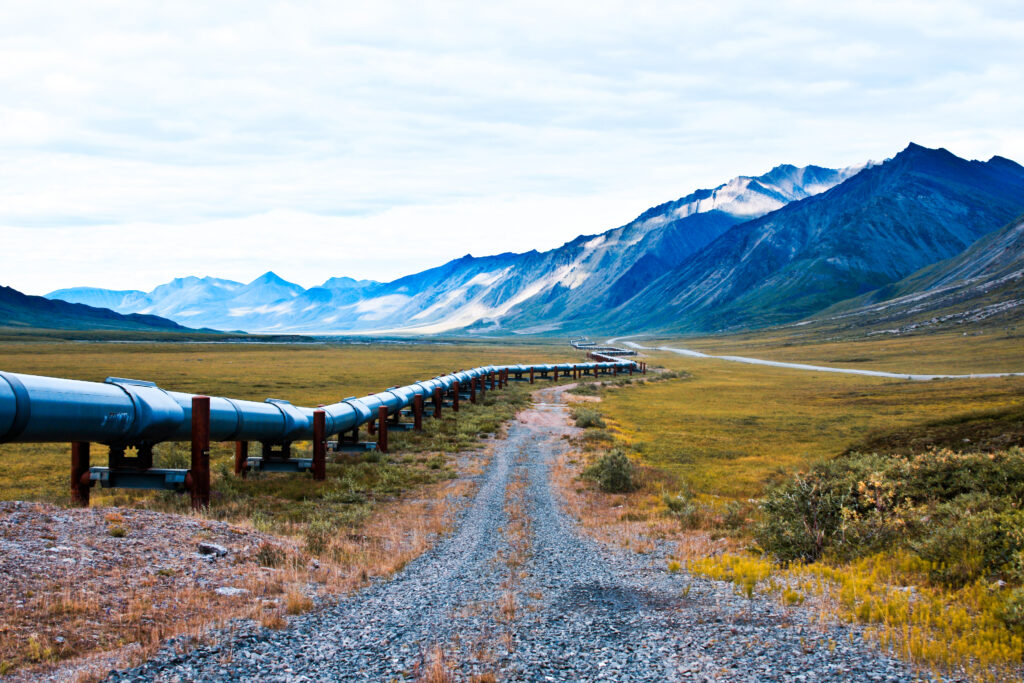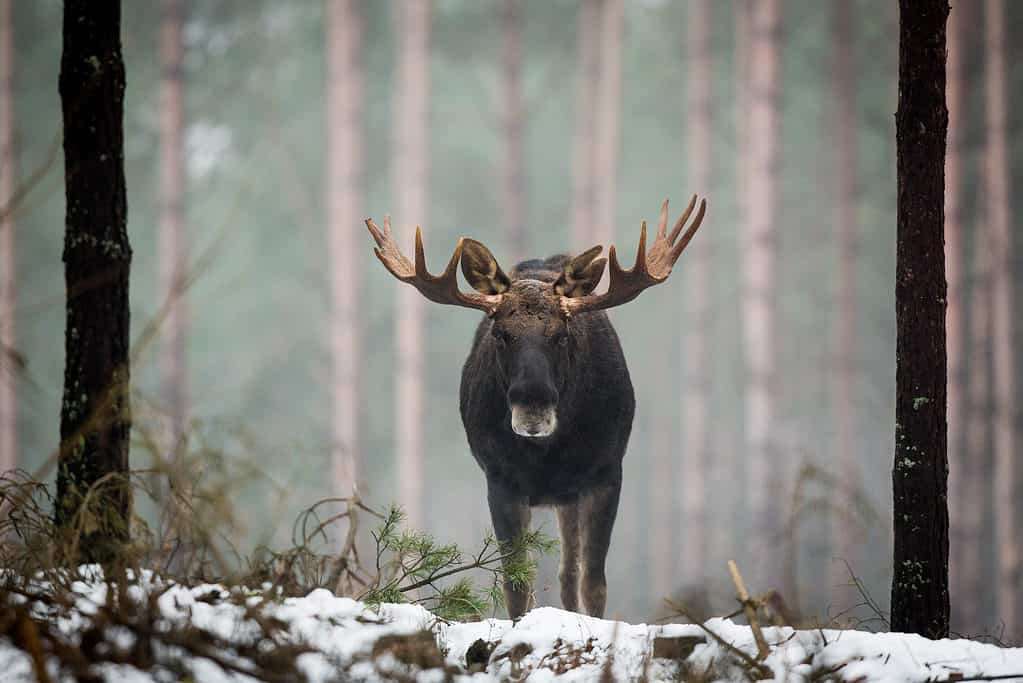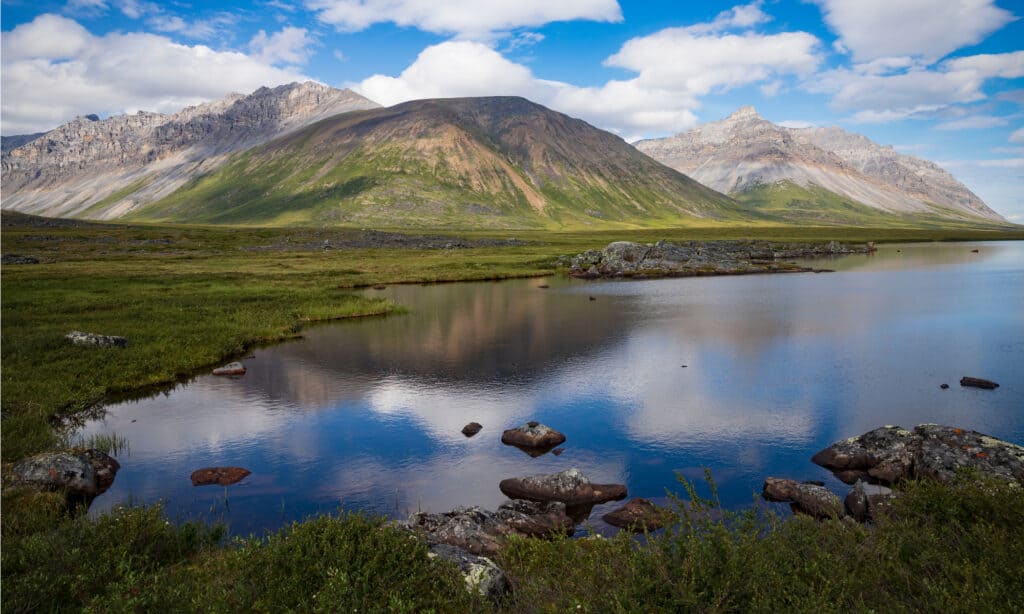The Coldest Temperature Ever Recorded in Alaska Will Give You Instant Brain Freeze
↓
Continue Reading To See This Amazing Video
Alaska is easily the coldest state in the United States. The average temperature in the state is 26.6°F. The next coldest state is North Dakota, with an average temperature of 40.4°F. But what is the lowest temperature ever recorded in America’s coldest state?
Mục Lục
Alaska’s Record Cold Temperature
Alaska’s coldest-ever temperature was recorded in the tiny settlement of Prospect Creek in the north-central part of the state. Prospect Creek is about 180 miles north of Fairbanks and just 34 miles north of Alaska’s geographic center.
 Gates of the Arctic National Park is close to Prospect Creek, where Alaska’s coldest temperature was recorded.
Gates of the Arctic National Park is close to Prospect Creek, where Alaska’s coldest temperature was recorded.
©iStock.com/joshanon
On January 23, 1971, the thermometer in Prospect Creek dropped to -80°F (−79.8°F, to be exact), the lowest temperature ever documented in Alaska. It was also the coldest temperature recorded in United States history.
The lowest temperature ever documented in the continental United States was on January 20, 1954, when Rogers Pass, Montana dipped to -70°F. Alaska’s coldest day bested that by 10°F.
In fact, that frigid January day in Prospect Creek came within one degree of tying the record for the coldest temperature ever recorded on the continent. The lowest temperature documented in North America was on February 3, 1947, when Snag in Canada‘s Yukon Territory dropped to -81°F. Consider this, though: Snag’s elevation (2,100 feet) is over 1,400 feet higher than the elevation of Prospect Creek (643 feet). That makes the record cold at Prospect Creek even more impressive.
A Record-Setting Winter Throughout The State
The extreme cold wasn’t limited to just that one day in Prospect Creek. January 1971 was one of the coldest months ever seen in Alaska. The frigid temperatures were a result of a high-pressure ridge that set up in the Bering Strait. This ridge blocked southerly airflow and allowed cold air from the north to pour in.
Record low temperatures were set across Alaska during the historic arctic blast of January 1971. The temperature in Fairbanks did not rise above -22°F for 18 consecutive days that month, a record stretch of such low temperatures.
Dietrich Camp dropped to its coldest-ever temperature of -70°F on January 23, 1971. Coldfoot Camp set its cold record one day earlier at -74°F. On January 24, 1971, Allakaket dropped to its record low of -75°F.

©iStock.com/5279210107801613
Much of the state was in a record-setting deep freeze that January, but none of those frigid temperatures would drop to the bone-chilling level seen in Prospect Creek.
With a low temperature of -80°F, you may wonder about the high temperature that day. With less than six hours of sunlight and that powerful ridge of high pressure, the temperature only rose to a high of -64°F in Prospect Creek on January 23, 1971. That still holds the record for Prospect Creek’s coldest high temperature.
Typical January Weather in Prospect Creek
How does this compare to a typical January day? The climate of Prospect Creek is officially classified as subarctic. The average January high temperature in Prospect Creek is -7°F. The average low is -23°F. While that would seem frigid to many of us, it is downright balmy compared to the temperatures of January 1971.
With such fierce winter cold, you would also expect Prospect Creek to receive tons of snow. Actually, it’s just the opposite. Prospect Creek receives around 13 inches of precipitation each year. It teeters on classification as a polar desert.
 Much of Alaska’s tundra is a polar desert: frigid, yet very dry.
Much of Alaska’s tundra is a polar desert: frigid, yet very dry.
©MarmotChaser / CC BY 2.0 – License
But this is where the winter of 1971 again broke records in Prospect Creek. The snowpack in Prospect Creek measured 60 inches in February 1971, a record that still stands today.
Settlement of Prospect Creek
Prospect Creek was originally settled as a mining camp during the Alaskan gold rush. It was more-or-less abandoned until it became a base camp for workers during the construction of the Trans-Alaska Pipeline System (TAPS) in 1974. It has also been home to workers during the construction and repair of Alaska’s Dalton Highway. When temporary workers are not present, the settlement is largely abandoned.
 Prospect Creek was settled as a camp for workers during the construction of the Trans-Alaska Pipeline System.
Prospect Creek was settled as a camp for workers during the construction of the Trans-Alaska Pipeline System.
©iStock.com/kyletperry
The entire area is extremely isolated. The closest village to Prospect Creek is 25 miles to the southeast. That is where you will find Bettles, home to around 12 year-round residents. The next closest village to Prospect Creek is Coldfoot, about 31 miles northeast. Coldfoot is home to 10 residents.
Prospect Creek Wildlife
Animals far outnumber people in this remote Alaskan wilderness. Even with such extreme winter temperatures, some animals still thrive here. You won’t see some of them in the winter, though.
Ground squirrels, for instance, go into full hibernation. Black and brown bears will also be nestled away in their dens during the fierce winter weather.
Bald eagles are frequently seen in the warmer months around Prospect Creek, but migrate further south during the winter. Fish are a major portion of the bald eagle’s diet, so these birds must find bodies of water that have not iced over. The bald eagle itself can withstand bitterly cold temperatures, as long as they have access to food such as fish.
The snowshoe hare thrives around Prospect Creek. The hare grows a thick coat to protect it from the chill.
Caribou and moose subsist largely on twigs, waiting for the bounty of summer to arrive when they can replace the weight they lose over the winter.
 Moose endure Alaska’s winter, waiting for summer when they can feast on the bounty of the land again.
Moose endure Alaska’s winter, waiting for summer when they can feast on the bounty of the land again.
©Szczepan Klejbuk/Shutterstock.com
Muskoxen have thick fur that insulates them from Alaska’s bitter winter cold. Herds also huddle together to stay warm when the temperature plummets.
Prospect Creek Today
Prospect Creek is home to Pump Station 5, otherwise known as the Jim River Station, of the TAPS.
The settlement itself may be uninhabited, but you can still visit Prospect Creek. It is located off the Dalton Highway at mile 135, and it has an official U.S. zip code. It’s 99726 if you’re interested, although the area for that zip code is huge (nearly 2,300 square miles) and there are only 30 permanent residents in the entire zip code area. How would you like to be the mail carrier on that route?
Gates of the Arctic National Park
Prospect Creek is close to both the Kanuti and the Yukon Flats National Wildlife Refuges. It is also situated near the Gates of the Arctic National Park, the least visited National Park in the U.S.
There are no roads, trails, or established campsites within Gates of the Arctic. The only changes to terrain are those formed by nature. It is a wild, untouched, and untamed wilderness. Those who explore the park must be completely self-sufficient, including being well-versed in outdoor survival skills.
Guided day trips are available. Fishing excursions are popular, as six wild rivers run through the park: the Alatna, John, Kobuk, Noatak, North Fork Koyukuk, and Tinayguk Rivers.
Flightseeing tours are also popular, allowing visitors to see the majestic Alaska landscape from the sky.
 Gates of the Arctic National Park is idyllic in the summer months.
Gates of the Arctic National Park is idyllic in the summer months.
©BlueBarronPhoto/Shutterstock.com
A visit to the area is one you’ll remember for the rest of your life. But, if an average January high of -7°F doesn’t interest you, you may want to know Prospect Creek’s average June high temperature is 71°F, with a 73°F average high in July. That’s when the area invites backpackers, anglers, and sightseers to take in the wild beauty of this Arctic wilderness.
The summer would also be a most pleasant time to visit the ghost town that was the site of the coldest-ever recorded temperature, both in Alaska and in the United States as a whole: Prospect Creek, Alaska.






